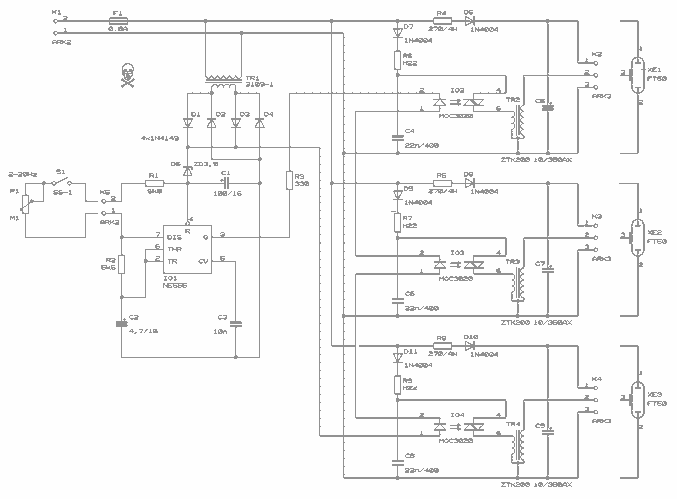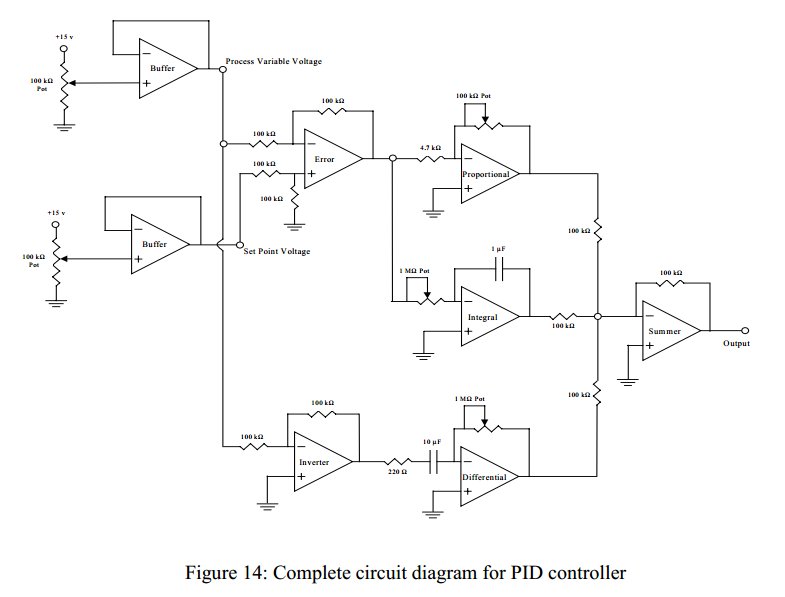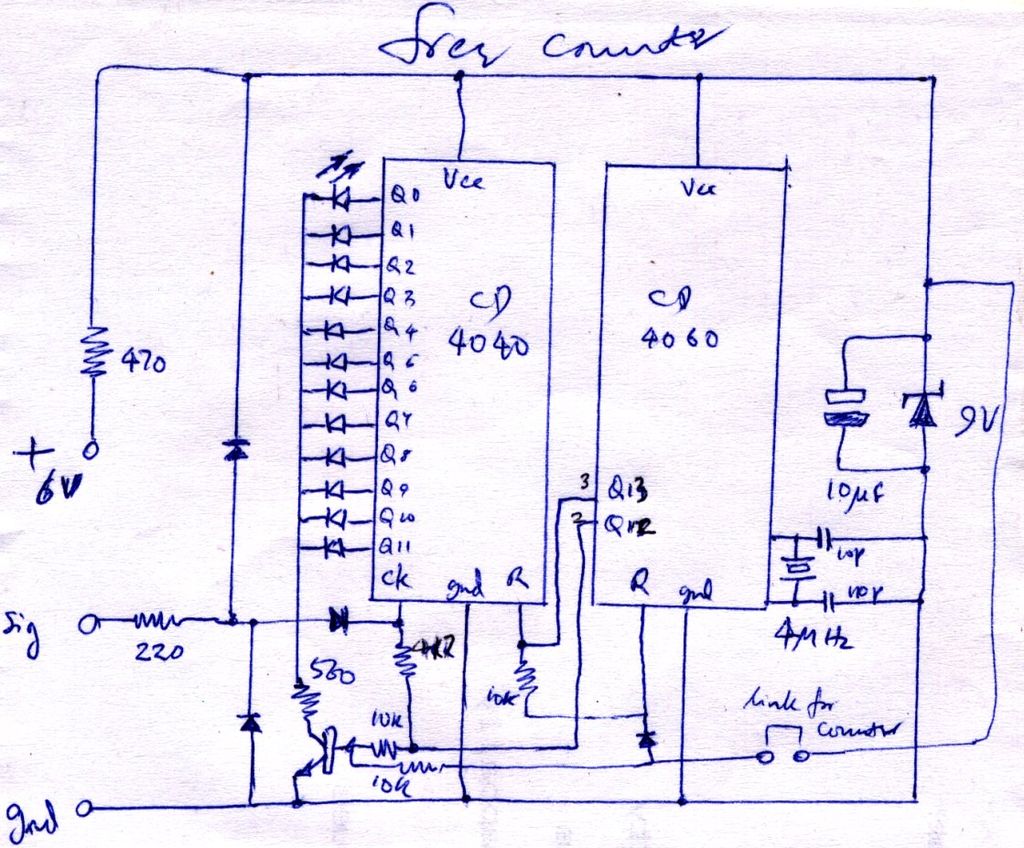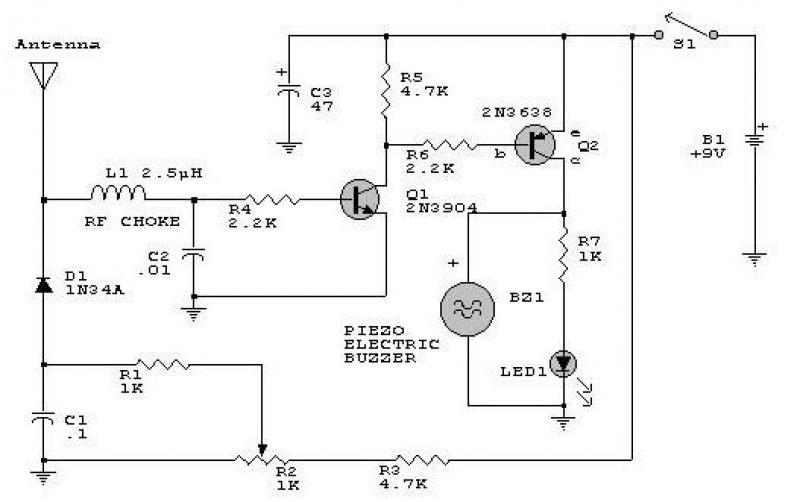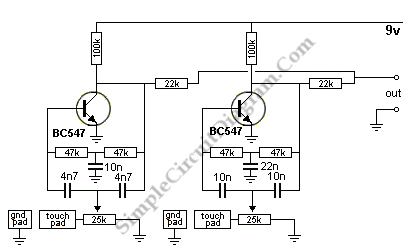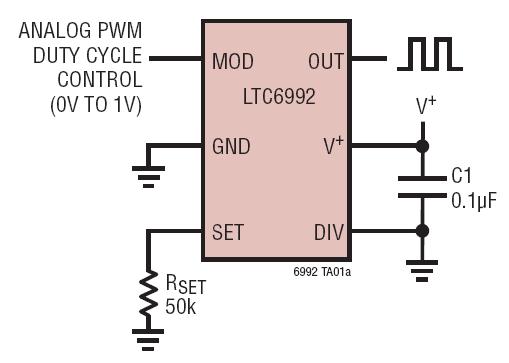
Electronic Buzzer with IC timer NE555 circuit diagram
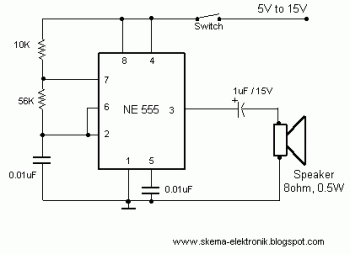
This easy electronic buzzer circuit is built based on a timer that operates to generate frequency. The IC timer NE555 is used as an astable multivibrator operating at approximately 1 kHz, producing a sound when powered on. The sound frequency can be adjusted by varying a 10K resistor, which can also be replaced with a variable resistor.
This electronic buzzer circuit utilizes the NE555 timer IC in an astable configuration to produce a continuous square wave output. The frequency of oscillation is primarily determined by the values of two resistors and a capacitor connected to the timer. In this configuration, the NE555 operates as a multivibrator, generating a square wave signal at a frequency of about 1 kHz, which corresponds to a tone audible to the human ear.
To adjust the frequency of the generated sound, a 10K resistor is used in the circuit. This resistor can be replaced with a variable resistor (potentiometer), allowing for fine-tuning of the sound frequency. By changing the resistance, the charging and discharging times of the timing capacitor are altered, thus varying the frequency of the output waveform.
The circuit typically includes a power supply, the NE555 timer IC, a timing capacitor, and the adjustable resistor. Upon powering the circuit, the NE555 generates a square wave output, which can be connected to a small speaker or piezo buzzer to produce sound. The output sound is a result of the rapid switching of the voltage levels, creating audible tones.
Overall, this buzzer circuit is simple and effective for applications requiring sound alerts or notifications, making it suitable for various electronic projects and prototypes.This easyelectronicbuzzercircuitbuilt based on timer works for gaining the frequency. The IC timer NE555 used as astable multivibrator operating at about 1kHz and produces a sound when switched on. The sound frequency can be adjusted by varying the 10K resistor. You may change the 10K resistor with variable resistor. We aim to transmit more infor mation by carrying articles. Please send us an E-mail to wanghuali@hqew. net within 15 days if we are involved in the problems of article content, copyright or other problems. We will delete it soon. 🔗 External reference
This electronic buzzer circuit utilizes the NE555 timer IC in an astable configuration to produce a continuous square wave output. The frequency of oscillation is primarily determined by the values of two resistors and a capacitor connected to the timer. In this configuration, the NE555 operates as a multivibrator, generating a square wave signal at a frequency of about 1 kHz, which corresponds to a tone audible to the human ear.
To adjust the frequency of the generated sound, a 10K resistor is used in the circuit. This resistor can be replaced with a variable resistor (potentiometer), allowing for fine-tuning of the sound frequency. By changing the resistance, the charging and discharging times of the timing capacitor are altered, thus varying the frequency of the output waveform.
The circuit typically includes a power supply, the NE555 timer IC, a timing capacitor, and the adjustable resistor. Upon powering the circuit, the NE555 generates a square wave output, which can be connected to a small speaker or piezo buzzer to produce sound. The output sound is a result of the rapid switching of the voltage levels, creating audible tones.
Overall, this buzzer circuit is simple and effective for applications requiring sound alerts or notifications, making it suitable for various electronic projects and prototypes.This easyelectronicbuzzercircuitbuilt based on timer works for gaining the frequency. The IC timer NE555 used as astable multivibrator operating at about 1kHz and produces a sound when switched on. The sound frequency can be adjusted by varying the 10K resistor. You may change the 10K resistor with variable resistor. We aim to transmit more infor mation by carrying articles. Please send us an E-mail to wanghuali@hqew. net within 15 days if we are involved in the problems of article content, copyright or other problems. We will delete it soon. 🔗 External reference
Warning: include(partials/cookie-banner.php): Failed to open stream: Permission denied in /var/www/html/nextgr/view-circuit.php on line 713
Warning: include(): Failed opening 'partials/cookie-banner.php' for inclusion (include_path='.:/usr/share/php') in /var/www/html/nextgr/view-circuit.php on line 713
